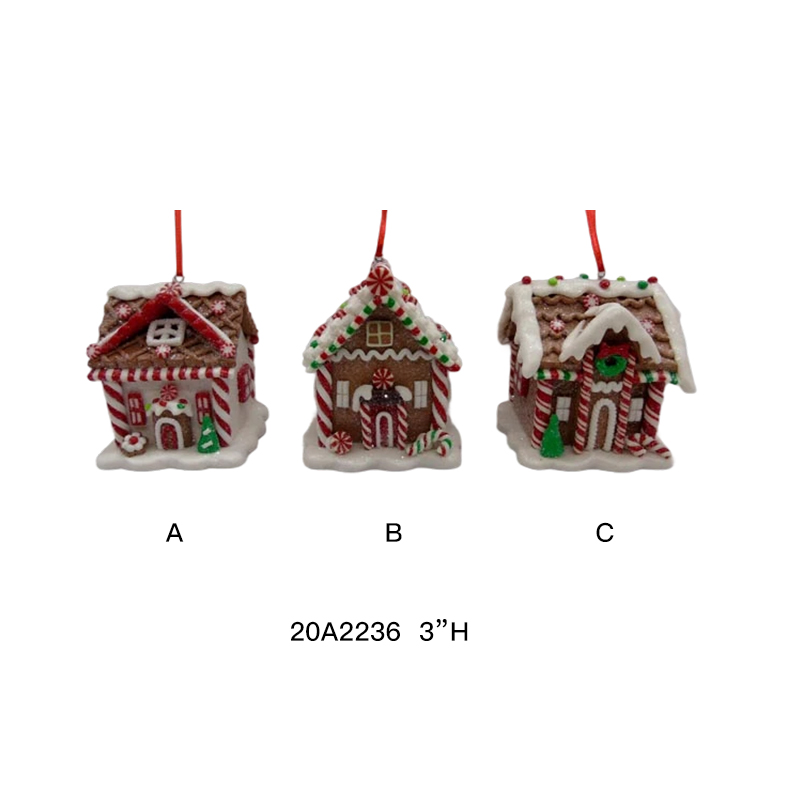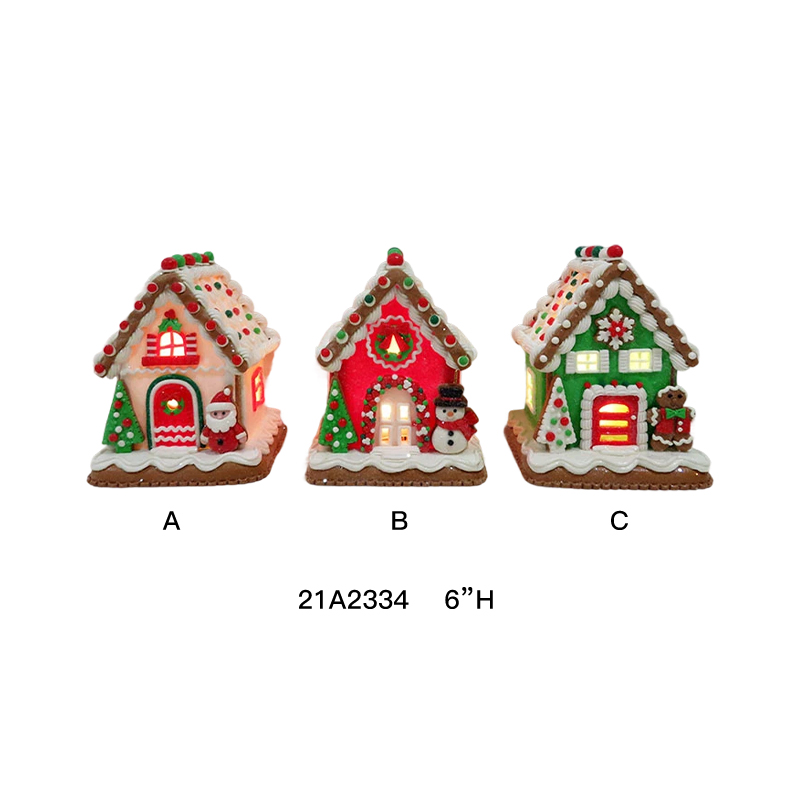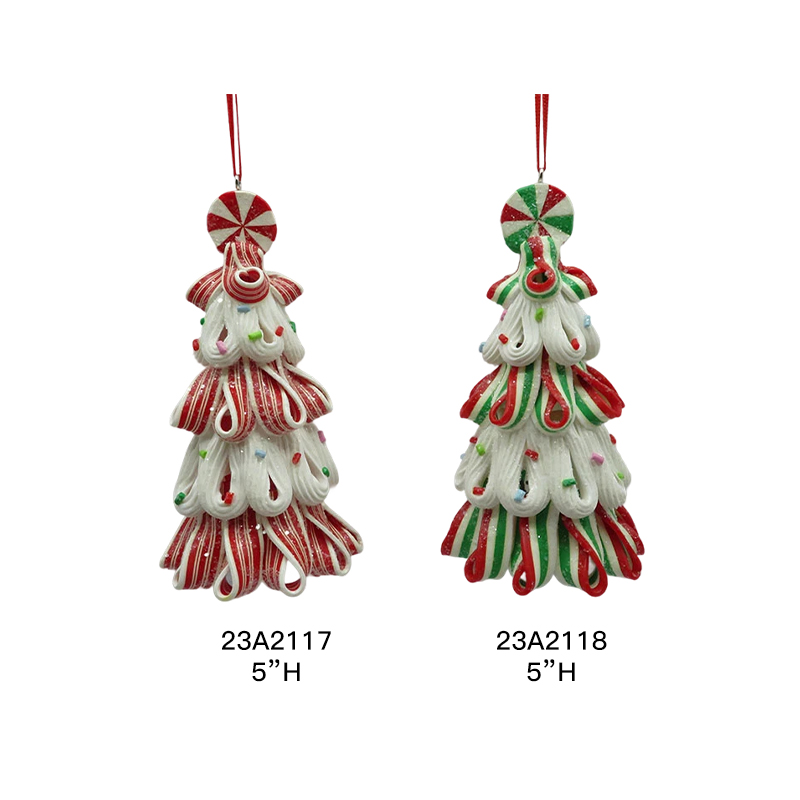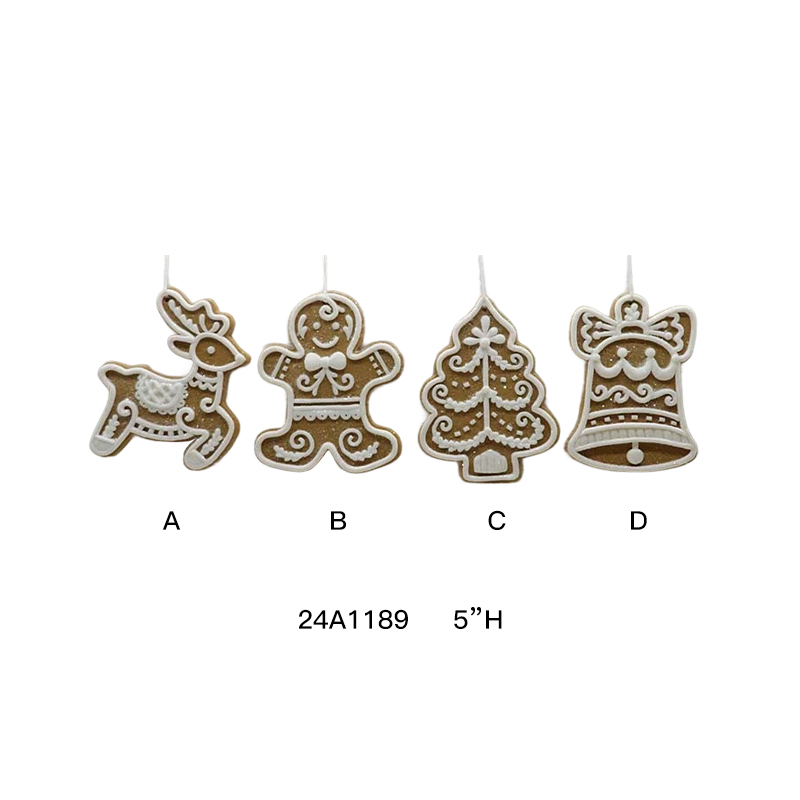Why does clay dough imbue Christmas ornaments with a uniquely warm, mellow texture and artistic aura?
Release Time : 2025-10-14
Among the dazzling array of Christmas ornaments, materials like plastic, metal, and glass each possess their own unique qualities, some gleaming and dazzling, some durable and sturdy, but they often lack the warmth that evokes tender memories. Christmas ornaments made from clay dough, on the other hand, stand out with their uniquely warm texture and artistic aura. Rather than pursuing extreme gloss or complex mechanical structures, they employ a simple, almost primitive beauty that quietly awakens the essence of the holiday. This texture and aura stems not only from the material's physical properties but also from the warmth of handcraft, its natural qualities, and the emotional associations it embodies.
As a natural base material, clay dough is essentially a fusion of soil and flour, imbued with an affinity for the earth. Its surface is neither as smooth and cold as plastic nor as hard and reflective as metal. Instead, it exhibits a slightly matte, grainy texture, as if freshly shaped by fingertips. This texture evokes childhood memories of kneading pastries or the warm sight of a mother kneading dough in the kitchen. When fingers gently stroke a Santa Claus or snowman made of clay, the gentle resistance and subtle temperature difference instantly draw the person closer to the object, as if it weren't just a commodity but a frozen fragment of life. This tangible warmth creates an emotional resonance that industrial materials struggle to replicate.
Visually, clay exhibits a restrained yet rich layering. Light, instead of reflecting harshly, is subtly absorbed and diffused, creating a gentle gradation of light and dark. This optical property imbues the ornaments with a calming depth under the light, especially under the warm glow of Christmas lights. The color rendering also departs from the flatness of printed matter. The pigment penetrates the surface, blending with the base color, creating a hand-painted quality of brushstrokes and texture. Every brushstroke and smudge is clearly visible, as if the artist has just put down their brush, imbuing the work with vibrant life.
More importantly, clay dough naturally bears the hallmark of a handmade feel. Even when mass-produced by expert artisans, the shapes retain slight irregularities: the reindeer's ears are slightly asymmetrical, the snowman's buttons vary in depth, and Santa's smile has a touch of hand-carved innocence. Far from being flaws, these "imperfections" become the very essence of artistic expression. They disrupt the cold order of mechanical reproduction, allowing one to sense the artist's breath and dedication. This texture evokes scenes of rural artisans crafting decorations around the hearth or Christmas traditions passed down through generations of families, evoking memories of a slower, more ritualistic holiday.
Culturally, the connection between clay dough and Christmas embodies a spirit of returning to nature. Christmas is a time of togetherness, gift-giving, and gratitude, and the simplicity and malleability of clay perfectly resonate with this theme. Unlike luxurious decorations, which emphasize ostentation, clay is modestly integrated into domestic spaces, serving as a medium for emotional connection. A star ornament made of clay dough, hung from a treetop, offers a subtle yet enduring warmth, reminiscent of the most precious gift of the holidays—not an expensive object, but a heartfelt companionship.
Furthermore, this material possesses excellent plasticity and expressiveness, accurately capturing the essence of Christmas symbols. From the angel's wings to the texture of the gingerbread house to the curved curve of the bell, each is vividly brought to life through hand-carving and shaping. The richness of detail makes each ornament resemble a miniature painting, worthy of close observation and appreciation. It's more than just a visual decoration; it's a collectible work of art, a treasure trove of festive memories from a particular year.
In summary, clay dough imbues Christmas ornaments with a unique warmth and artistic quality because it blends nature, craftsmanship, and emotion. Rather than pleasing the eye with flamboyance, it touches the heart with its simplicity. Amid the hustle and bustle of the holiday season, it reminds us that the true beauty of the holidays lies not in the twinkling lights, but in the warmth and memories of handcrafted craftsmanship.
As a natural base material, clay dough is essentially a fusion of soil and flour, imbued with an affinity for the earth. Its surface is neither as smooth and cold as plastic nor as hard and reflective as metal. Instead, it exhibits a slightly matte, grainy texture, as if freshly shaped by fingertips. This texture evokes childhood memories of kneading pastries or the warm sight of a mother kneading dough in the kitchen. When fingers gently stroke a Santa Claus or snowman made of clay, the gentle resistance and subtle temperature difference instantly draw the person closer to the object, as if it weren't just a commodity but a frozen fragment of life. This tangible warmth creates an emotional resonance that industrial materials struggle to replicate.
Visually, clay exhibits a restrained yet rich layering. Light, instead of reflecting harshly, is subtly absorbed and diffused, creating a gentle gradation of light and dark. This optical property imbues the ornaments with a calming depth under the light, especially under the warm glow of Christmas lights. The color rendering also departs from the flatness of printed matter. The pigment penetrates the surface, blending with the base color, creating a hand-painted quality of brushstrokes and texture. Every brushstroke and smudge is clearly visible, as if the artist has just put down their brush, imbuing the work with vibrant life.
More importantly, clay dough naturally bears the hallmark of a handmade feel. Even when mass-produced by expert artisans, the shapes retain slight irregularities: the reindeer's ears are slightly asymmetrical, the snowman's buttons vary in depth, and Santa's smile has a touch of hand-carved innocence. Far from being flaws, these "imperfections" become the very essence of artistic expression. They disrupt the cold order of mechanical reproduction, allowing one to sense the artist's breath and dedication. This texture evokes scenes of rural artisans crafting decorations around the hearth or Christmas traditions passed down through generations of families, evoking memories of a slower, more ritualistic holiday.
Culturally, the connection between clay dough and Christmas embodies a spirit of returning to nature. Christmas is a time of togetherness, gift-giving, and gratitude, and the simplicity and malleability of clay perfectly resonate with this theme. Unlike luxurious decorations, which emphasize ostentation, clay is modestly integrated into domestic spaces, serving as a medium for emotional connection. A star ornament made of clay dough, hung from a treetop, offers a subtle yet enduring warmth, reminiscent of the most precious gift of the holidays—not an expensive object, but a heartfelt companionship.
Furthermore, this material possesses excellent plasticity and expressiveness, accurately capturing the essence of Christmas symbols. From the angel's wings to the texture of the gingerbread house to the curved curve of the bell, each is vividly brought to life through hand-carving and shaping. The richness of detail makes each ornament resemble a miniature painting, worthy of close observation and appreciation. It's more than just a visual decoration; it's a collectible work of art, a treasure trove of festive memories from a particular year.
In summary, clay dough imbues Christmas ornaments with a unique warmth and artistic quality because it blends nature, craftsmanship, and emotion. Rather than pleasing the eye with flamboyance, it touches the heart with its simplicity. Amid the hustle and bustle of the holiday season, it reminds us that the true beauty of the holidays lies not in the twinkling lights, but in the warmth and memories of handcrafted craftsmanship.







